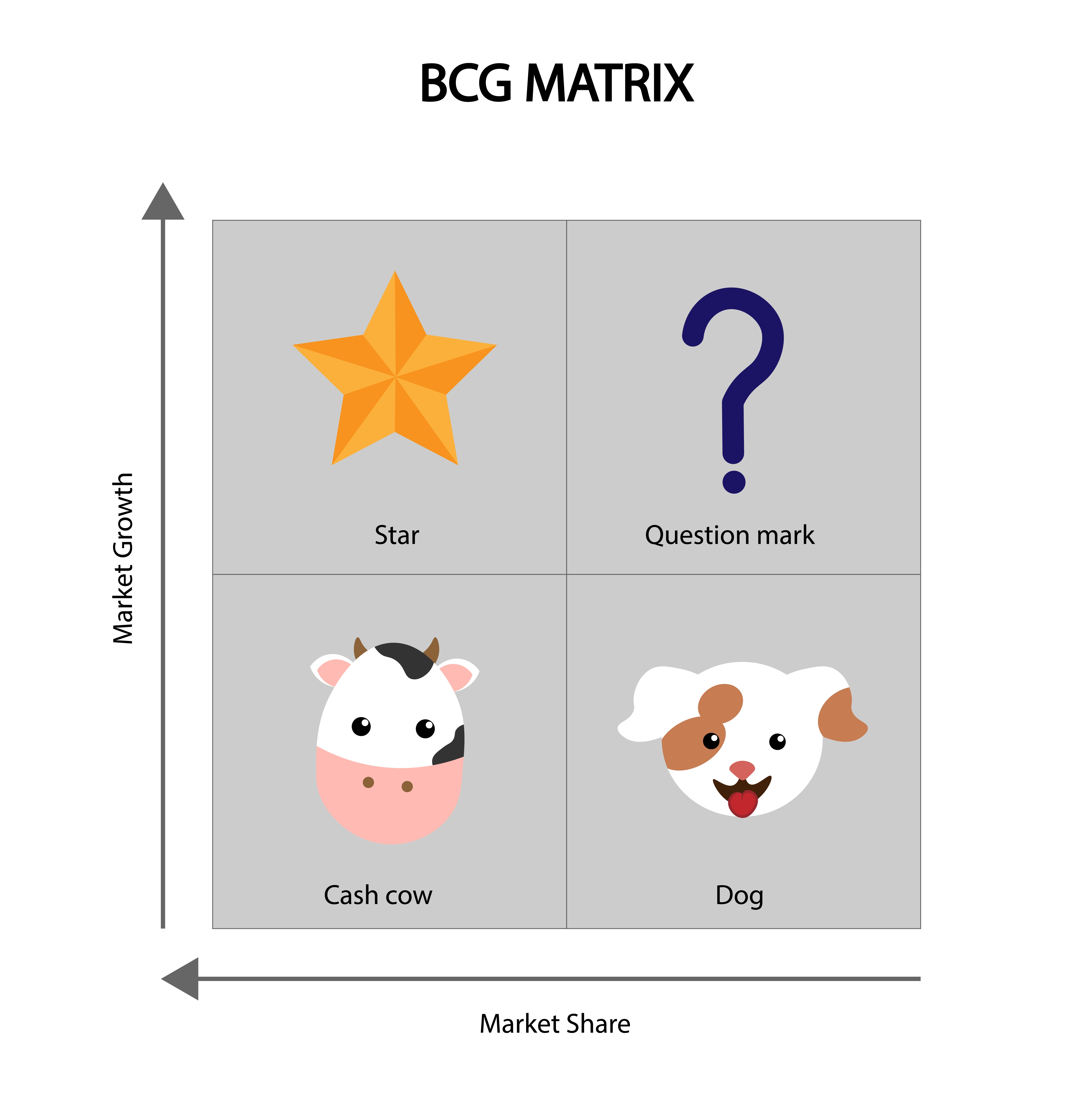
The Boston Matrix, also known as the BCG Matrix, was created in 1968 by Bruce Henderson at the Boston Consulting Group in the USA.

Why the Boston Matrix Still Works Today?
Today many large business enterprises still using this brilliant matrix, which speak volumes for is effectiveness.
What is the Boston Matrix?
The BCG Matrix (or Boston Matrix) is a strategic framework used to evaluate an organisation’s offerings based on their market growth and relative market share, helping determine their position in the business lifecycle. It divides products into Stars, Cash Cows, wildcats, and Dogs, once evaluated it works as a guide for resource investment and strategic planning. It categorises products into four quadrants:
1 Wildcat / Question Mark (Low Market Share, High Market Growth)
What it is: A New Business or start up: A risky product with potential for success or failure.
Characteristics:
Needs substantial investment to increase market share.
Can either grow into a Star or fail and become a Dog.
Businesses must decide whether to invest or divest.
2 Star (High Market Share, High Market Growth)
What it is: Established and Steady Business – A fast-growing product that dominates the market and ready to scale.
Characteristics:
Requires heavy investment to maintain growth.
Generates significant revenue but also consumes cash.
Has the potential to become a Cash Cow if growth slows but market share remains high.
3 Cash Cow (High Market Share, Low Market Growth)
What it is: Establish Corporation – A mature product that generates steady income with little need for investment.
Characteristics:
Strong, stable revenue stream.
Low growth means fewer reinvestment needs.
Funds from Cash Cows can be used to support Stars and Wildcats.
4. Dog (Low Market Share, Low Market Growth)
What it is: A product that is in decline and dying with weak performance that isn’t growing.
Characteristics:
Generates little or no profit.
Often a candidate for discontinuation or rebranding.
May still serve niche markets or have strategic value.
Example: A DVD rental service in the age of streaming.
The BCG Matrix helps businesses allocate resources efficiently. Stars and Cash Cows sustain the business, while Question Marks/Wildcats need careful decisions, and Dogs may need to be phased out.
Relevance and why every small business needs to master this matrix.
Limited Resource Allocation:
Small businesses don’t have the luxury of throwing money at everything, they often have limited resources, and access to marketing professionals. The Boston Matrix helps businesses identify which products to invest in (Stars and Question Marks) and which ones to consider divesting (Dogs). The matrix helps decide where to double down and where to cut back.
Strategic Focus:
Many small businesses offer multiple services or products but don’t know which ones drive real results. The matrix provides clarity on what products or services sustains the business vs. what drains it. It provides a clear framework for small business owners to prioritise their offerings. For example, focusing on Stars can maximise growth potential, while nurturing Wildcat (Question Marks) can help build future Stars.
Market Insights:
Understanding where each product stands can inform marketing managers. For example, Cash Cows can fund new product development, while Stars may require aggressive marketing to maintain their position.
Performance Tracking:
Regularly updating the matrix allows small businesses to track performance over time, adjusting strategies as market conditions change.
Simplicity and Clarity:
The visual nature of the matrix makes it easy for small business owners and stakeholders to understand complex data quickly.
It can have Limitations,
Oversimplification: The model may oversimplify market dynamics and not account for external factors.
Static View: The matrix is a snapshot in time and may not reflect rapid changes in the market.
Not Comprehensive: It focuses primarily on market share and growth, neglecting other important factors like profitability, customer loyalty, and brand strength.
Conclusion
There are many ways to use this matric and when using in conjunction with other strategic frameworks such as the Ansoff Matrix, SWOT Analysis, Porter’s Five Forces, & Blue Ocean Strategy, business can start to apply strategic frameworks that will helps evaluate potential market opportunities and identify risks for new products or services.
Need to understand how the Boston Matrix can work for your business?
Are you a star! Contact Us for a free 1-hour assessment consultation.



